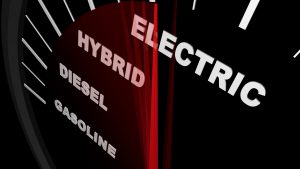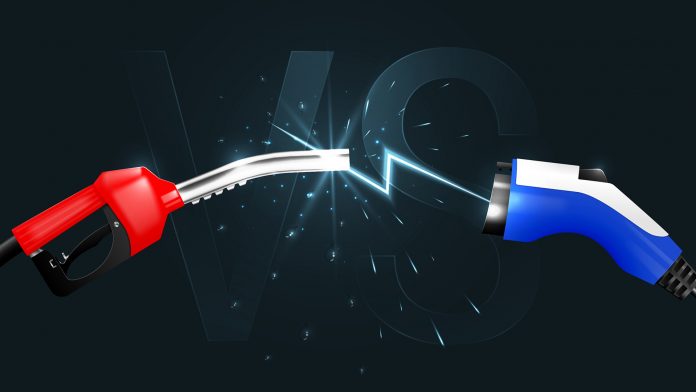Andrew Phillips, Executive Director and Chief Financial Officer of Lithium Power International, discusses the current supply and demand forces for oil and what this means for the electric vehicle market.
Electric vehicles (EVs) have reached the critical mass needed for clean and silent forms of mobility to overtake their carbon-emitting rivals, and they are powering ahead to global dominance. After the first appearance of crude EVs in Europe in the 1830s, electric cars were frequently seen on roads until around 1910, when the lack of charging infrastructure forced buyers to embrace petrol.
The discovery of large oilfields gave internal combustion engines (ICE) a huge advantage. But that change is now happening in reverse, and the electric vehicle market is flourishing. EVs are regaining the upper hand on petrol thanks to cheaper running costs and global imperatives to slash carbon emissions to combat global warming.
Oil supply versus demand
Bloomberg NEF predicted in June that the world’s demand for oil would peak this decade. Its recently published analysis on peak oil said: “As more people switch from gasoline and diesel guzzlers to electric vehicles, oil consumption for road transport is on track to crest in 2027. But, while the ceiling will be reached, the thirst for oil won’t disappear anytime soon.
“Based on the current trajectory, the amount of oil needed to power cars, vans, and trucks will roughly halve between now and 2050, leaving 20 million barrels a day of demand in play. That is about as much oil produced by the US last year.”
This is not something to be taken lightly. The report goes on to say: “There were 27 million battery-electric and plug-in hybrid passenger vehicles on the world’s roads at the end of last year, and that’s expected to jump to 41 million this year.” That is an increase of 52%.
China is sitting in the driving seat, as it has been doing for some time. Local incentives and restrictions on internal combustion engines are now rapidly putting an end to noxious exhaust pipes. The trend is the same in the US, where EV tax credits are hitting home. So far, so good. But Bloomberg NEF also reveals a few concerning statistics. The current global fleet of gas burners is still using 24 million barrels of oil each day – a drop in the ocean compared with savings of less than 330,00 barrels from the fleet of zero-emission vehicles. Signs are strengthening, however, that the pace of change will speed up.
Positive predictions for the electric vehicle market
It is encouraging to read what the leaders of several geographically diverse global automakers have said publicly in recent weeks.
Tesla’s founder and CEO, Elon Musk, told a briefing of investment analysts in July: “In Q2, we achieved record vehicle production and deliveries, and record revenue of about $25bn in a single quarter. Model Y became the best-selling vehicle of any kind globally in Q1, surpassing the likes of Corolla and Golf.
“The long-term economy, we think, is going to just drive volume through the ceiling, next level. And our future Robotaxi products, we think, have a quasi-infinite demand. It will be, by far, the highest units per hour of any vehicle production ever, and I’m so very excited about that.”
A month earlier, Volkswagen’s CEO and Chairman, Oliver Blume, told investors that the ramp-up of PowerCo – VW’s battery company – was well underway, with three gigafactories under construction to produce a combined 200 GWh capacity. The company has options to build more battery factories if it wants to, and there is sufficient demand to support it.
“All of our plans are powered by clean energy to support our commitment to sustainability,” Blume continued.
“Driven by (PowerCo’s) independent setup, we are willing to open the capital structure to external investors to fund additional growth”. Blume added that, while a ‘massively challenging constraint’ existed in the availability of raw materials, including lithium, VW would continue to evaluate its funding options. He noted that it had secured 30% of requirements for battery materials, including lithium, until 2030.
“Our strategic focus lies in execution. We are already delivering across all key elements of our battery strategy.” That includes a gigafactory, which is being built in Canada.

Hyundai Motors, which owns the Ioniq brand of EVs and has a large shareholding in Kia, has ambitions to improve its battery design capabilities and battery management technology to provide improvements in the range, life, and safety of its vehicles. The Senior Vice President of its battery development centre, Chang Hwan Kim, says that the focus is on achieving high-density and improved safety by developing its own lithium metal and solid-state batteries.
Chang Hwan Kim said: “These next-gen batteries require a lot of simultaneous development efforts, ranging from battery cells, cell production facilities and manufacturing processes. In order to secure all the required technologies, we are actively engaging in collaboration with many leading companies.” He announced a research and development facility was being built in South Korea by 2024 to speed up the process.
“Our aim is to verify all technologies that make up the entire battery value chain, starting from battery materials, and cell design, all the way to demonstrating the mass production readiness. These next-gen batteries will power not only EVs but also future mobility, such as Advanced Air Mobility (AAM) and robotics, and enhance the synergy between our future businesses as a mobility company. By targeting the entire battery value chain, we will improve batteries optimised for vehicles and improve costs to solidify our leadership in electric vehicles,” he added.
The International Energy Agency (IEA) wrapped up the combined impact of the global auto industry recently by describing what is happening as a sea-change which would avoid the need by 2030 for the consumption of five million barrels each day. More than ten million electric cars were sold worldwide in 2022, according to the group’s annual Global Electric Vehicle Outlook survey. Sales of EVs were expected to grow strongly again this year, reaching 18% of the global market – 14 million in sales.
Fatih Birol, IEA Executive Director, said: “The trends we are witnessing have significant implications for global oil demand.
“The internal combustion engine has gone unrivalled for over a century, but electric vehicles are changing the status quo. By 2030, they will avoid the need for at least five million barrels a day of oil. Cars are just the first wave. Electric buses and trucks will follow soon.”
What more is needed?
But there is plenty of work to be done before the game is won. The global electric vehicle market is concentrated in three main regions – China, Europe, and the US. China remains the electric vehicle market leader, accounting for 60% of all auto sales last year. The market for plug-in models rose by nearly 40% in the first half of 2023, with 1.9 million vehicle sales. It is the world’s largest EV maker, making up about half of all global sales, according to Cars Guide. Just three brands dominated the growth – Tesla, SGMW, and the fast-growing BYD. EVs are expected to make up 58% of auto sales by 2030.
According to the Chinese Association of Automobile Manufacturers’ June market report, the large increase was partly due to the mass launch of new models. It said: “The consumption potential of the auto market will be further released.”
The intention is to achieve stable growth, although the group did acknowledge that the current external environment remained complex. This could refer to the growth now emerging in the US and Europe.
The industry that will emerge from these initiatives during the coming decade will be very different to what we see today. One trend is for EV makers to step outside their own home bases, as Tesla did in China many years ago. The latest steps see new cross-border ventures being formed in a trend to speed up offshore sales. Volkswagen is now also moving into China, for instance. It is the world’s largest electric vehicle market and is a beacon for many, particularly early movers that are making significant advancements in their traditional markets. It has paid $700m to acquire 5% of XPeng, which has only been around for less than ten years and buys its batteries from CATL. It has plans initially to sell a premium sedan, the P7, and a luxury SUV, the G9, in Europe. But Volkswagen is also using its Audi brand to form an alliance with SAIC Motor, based in Shanghai.
Please note, this article will also appear in the fifteenth edition of our quarterly publication.









